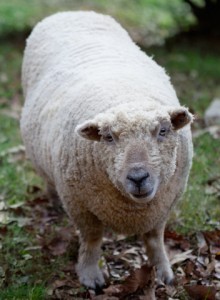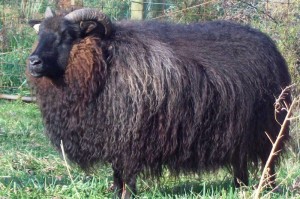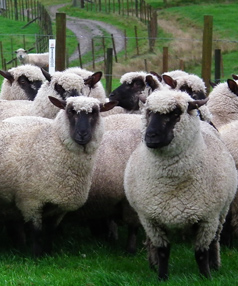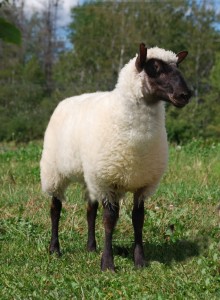2/13/2014
2/09/2014
Raising Multi-Purpose Sheep
Sheep can be raised for multiple purposes: meat, milk, wool, hides, and grazing service. Below are a few example varieties well suited for multi-purpose sheep farming.
|
Clun Forest Clun Forest Sheep
For looks, this one's my favorite. Sheep grown for wool, traditionally fetch a higher price if the skin and whool are the same color though (despite how pretty this sheep is). This medium-sized 1000 year old breed comes from England but didn’t make it to American until the
70’s. Rams grow to 175-200 lbs and ewes to 130-160 lbs. Clun Forest sheep are adaptable and hardy, yield plenty of
milk, sweet meat, and a creamy white fleece. Twins are typical. They thrive on just grass,
are disease- and parasite-resistant, and easy to keep.
 |
| Merinos |
Multi-purpose Merinos sheep are from Australia. They produce lean meat, high-quality wool and are
wrinkle-free, making them easy to sheer and to keep clean and bug-free. Since the skin is wrinkle-free, the hides are fine and easy to work with. It’s been compared to
the quality of Moroccan goat skin so the hides would be great for
clothing or for trading.
 |
| Icelandic |
Icelandic Sheep are centuries old and have remained unchanged for most of that time. They
were imported to Canada 1985, then to the USA in the 1990’s. Their double-layered coat that consists of an inner layer of soft, fine wool and an outer layer that's water-resistant, longer and courser,
growing as long as 15". The fleece is gray, black, brown or patterned. The skin is thick enough to use for rugs but fine enough for clothing. The meat is lean and sweet. The milk is gaining popularity for both drinking and cheese-making purposes. They’re short and stocky, with the rams weighing 180-220 lbs and ewes 130-160 lbs. The ewes are easy breeders, good mothers that typically produce hardy twins and sometimes triplets. They're also feed-efficient and generally easy to care for.
 |
| Shropshire |
Developed in England in the early 1800’s. Popular for their gentility, wool and hardiness. They can withstand wind, cold, sleet, and snow. The Shropshire sheep came to America in
the late 1800’s. Adult rams weigh 226-250 lbs and ewes 150-180 lbs. The wool is thick and luxurious. The meat is tasty. Ewes birth easily and typically live long lives. Called the "Ideal Farm Sheep," Shropshires were boasted to have "wool from the tip of the nose to the tip of the toes."
 |
| Racka |
The Racka is a unique breed with both ewes and rams possessing long spiral shaped horns. The breed is of the Zackel type and originated in Hungary. The breed is used for milk, wool and meat production. Mature males may have horns as long as two feet or more. The minimum standard length is given as 50 cm (20 inches) for rams and 30 cm (12-15 inches) for ewes.
The cork-screw horns protrude almost straight upward from the top of the head. The Racka has been described as a hardy animal and is often used in crossbreeding due to its ability to pass this survivability to its offspring. The breeds unique appearance and quiet disposition would make it a desirable animal for hobby situations.
 |
| Rambouillet |
The Rambouillet is the "backbone" of the American Sheep Industry, forming the foundation of most western range flocks and raised throughout the United States. The Rambouillet descends entirely from the Spanish Merino. In fact, it is the French version of the Merino developed when Louis XVI imported 386 Spanish Merinos in 1786 for his estate at Rambouillet.
Though named for the town in France, the breed owes much of its development to Germany and the United States. The Rambouillet is a dual purpose sheep, producing a desirable carcass and good fine wool. Rambouillets are large sized, rugged and long-lived with a strong flocking instinct. Rambouillet ewes possess many desirable traits which have resulted in their inclusion in crossbreeding programs to improve lamb production.
Source:
http://www.sheep101.info/
http://www.survivopedia.com/survivors-guide-raising-multi-purpose-sheep/
Subscribe to:
Posts (Atom)

